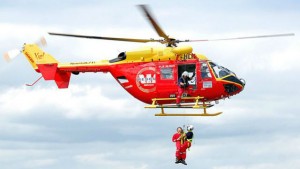Home » Commentary » Opinion » Helicopter money can’t rescue stranded economies
Patrick Carvalho, Robert Carling
· Australian Financial Review
 There is much huffing and puffing in global financial media about the latest textbook curiosity to be lifted to the status of policy option — the use of ‘helicopter money’ to rescue us from the perils of a weak global economy. However, free money delivering economic salvation is about as likely as the oft-vaunted ‘free lunch’.
There is much huffing and puffing in global financial media about the latest textbook curiosity to be lifted to the status of policy option — the use of ‘helicopter money’ to rescue us from the perils of a weak global economy. However, free money delivering economic salvation is about as likely as the oft-vaunted ‘free lunch’.
Let’s be clear: helicopter money isn’t about to appear on the Reserve Bank board’s agenda. Australia, happily, is positioned several degrees of separation from extreme monetary measures. But as for the rest of the world, a feature of the post-GFC policy environment is how quickly radicalism becomes orthodoxy.
We have to take radical suggestions seriously, and helicopter money is the latest suggested addition to a procession of extreme measures adopted by macro policymakers since 2008: massive fiscal stimulus; zero policy interest rates; quantitative easing (QE); and negative interest rates. While most economies perked up at some stage after 2008, we have also got more financial leverage, selectively frothy asset markets, more heavily-indebted governments, and now a global economy running out of steam again.
Helicopter money conjures up images of central banks printing money and dropping it from the sky, but in reality, if it ever happened, it would be a joint fiscal/monetary operation, with the government crediting peoples’ accounts and the central bank financing the resulting deficit by purchasing bonds from the government directly. Never mind the legal obstacles to central bank financing of deficits in most countries – let’s assume they can be circumvented somehow.
Helicopter money is actually fiscal stimulus with monetary financing. Like QE, it adds to the money supply, but unlike QE it puts additional spending power directly into the hands of final spenders such as consumers. It would be like the Rudd government’s 2008 ‘cash splash’ to households, but with the Reserve Bank lending the government the money. The direct stimulus from helicopter money is supposed to be its appeal over QE. But the costs would overwhelm any benefits it might have.
Milton Friedman has been enlisted from his grave to support helicopter money. It is true that he hypothesised about the economic effects if ‘one day a helicopter flies over this community and drops an additional $1,000 in bills from the sky, which is, of course, hastily collected by members of the community’. But Friedman wasn’t proposing the use of helicopter money at that time — merely using it as a hypothetical illustration of the powers (and dangers) of monetary policy — and there is no reason to think he would propose it now
For starters, Friedman was quick to add an important caveat to his theoretical experiment: ‘Let us suppose further that everyone is convinced that this is a unique event which will never be repeated.’ In practice helicopter drops would be repeated as the response disappointed and politicians quickly got the hang of handing out ‘free’ money.
It is fanciful to think this would spark a sustained uplift in economic growth, or indeed any uplift at all. The more likely result would be a collapse of confidence in fiat money; a flight to alternatives such as real assets; the loss of central bank independence and credibility built up over many years; and an upsurge in inflation beyond what policymakers in zero and low inflation countries currently want.
If one wants to see the lasting consequences of helicopter money, the hyperinflation of Germany’s Weimer Republic or even more recently the travails of the Zimbabwean economy are good exhibits to start with.
There is no easy path to lifting global growth. A lot of hard work against vested interests is required to make much-needed structural reforms towards free trade, flexible markets and strengthening the rule of law. But most governments around the world are not heading in this direction. The 2014 Brisbane plan for G20 countries to make such reforms in support of stronger sustainable growth was well-intentioned, but its implementation has been a farce. Monetary policy cannot compensate for such failures.
Helicopter money is an interesting intellectual experiment, but one that has no place in the macro policy arsenal. For the advocates of overt money-financed deficits, the late Milton Friedman would certainly quip once more that the government solution to a problem is usually as bad as the problem.
Robert Carling is a Senior Fellow and Dr Patrick Carvalho a Research Fellow at The Centre for Independent Studies.
Helicopter money can’t rescue stranded economies